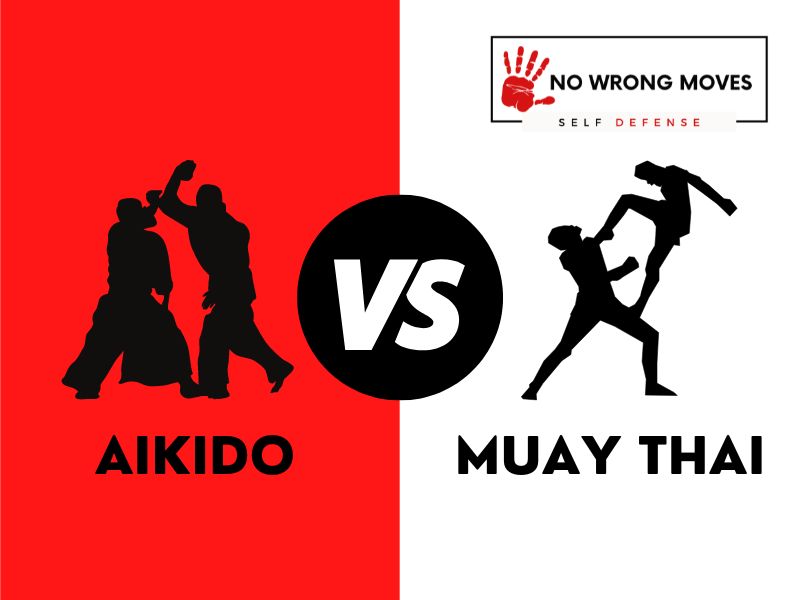
Many people in the martial arts community debate whether Aikido or Muay Thai is the better practice. While both offer unique benefits and principles, there are some key differences that set them apart.
The main difference between Aikido and Muay Thai is in their intent and application. Aikido emphasizes self-defense and protection of oneself and others, while Muay Thai is a striking-based martial art focused on physical combat and competition.
Aikido uses circular movements, redirecting or blending with an attacker's force to control or throw them without causing harm. Muay Thai, on the other hand, uses linear movements to strike with the hands, elbows, knees, and feet.
Aikido practitioners use minimum force, while Muay Thai practitioners aim to inflict maximum damage with their strikes.
Both martial arts also have different training methods and philosophies. In Aikido, there is a focus on principles such as nonresistance, harmony, and respect for all beings. Muay Thai training often includes conditioning exercises to develop strength and endurance.
While both martial arts can be used for self-defense, the real-life applications of Aikido and Muay Thai differ.
Aikido's non-resistance principles can benefit individuals in potentially dangerous situations by diffusing aggression without causing harm. Muay Thai, on the other hand, is more useful in physical confrontations where one must fight back and defend themselves with force.
In summary, Aikido and Muay Thai have different intentions, techniques, training methods, and real-life applications. Practitioners of each martial art may benefit from studying the other for a well-rounded understanding of self-defense.
What We Know About Aikido

The art of Aikido is generally encompassed as a defensive martial technique. This means it's not intended to work aggressively, but rather when somebody becomes aggressive towards you. The aggressor in this case will often take on some form or another (role playing).
A lot goes into each movement, regardless of if it's standing still or moving around. has been considered aesthetically beautiful thanks largely due to its fluidity and grace. Learning how to properly balance yourself and redirect an attacker’s energy is key for the art of Aikido.
One important aspect of Aikido is also being able to control your own emotions during a potentially tense situation. It teaches practitioners to remain calm and in control, instead of escalating conflicts or resorting to violence as a first option.
Overall, Aikido is not just about learning self-defense techniques, but also about the discipline and mindfulness that goes into each movement and decision made during an altercation. It can be a fulfilling practice for both the body and mind.
What We Know About Muay Thai

Muay Thai is a martial art that originates from Thailand. It is also known as "the art of eight limbs" because it makes use of punches, kicks, elbows, and knees. Muay Thai is an incredibly effective martial art, and it has been used by the Thai military for centuries.
Muay Thai training is grueling, but it is also very rewarding. Muay Thai practitioners develop incredible strength, speed, and conditioning, and they also learn to control their breath and movement in order to generate maximum power.
If you are interested in learning Muay Thai, you can find classes at most martial arts gyms. Just be prepared to put in the work--Muay Thai is not for the faint of heart!
Of course, this is only a brief history and understanding of Aikido and Muay Thai, but if you want to go deeper into either art, be sure to check out the following posts:
Now, back to the comparison...
Let's look at the origins of the respective disciplines and then compare the key elements of their practices. You will be able to understand some of their similarities and differences a bit better afterward.
| Aikido | Muay Thai | |
| Origins | Japanese | Thai |
Key Elements Of Aikido

Aikido is a Japanese martial art that focuses on the proper stance and balance of the practitioner. Proper stance and balance are critical components of Aikido, as they provide the foundation for all other techniques.
A stable and balanced stance allows the practitioner to move fluidly and with control, making it easier to perform techniques effectively.
In Aikido, practitioners learn to redirect their opponent's energy rather than using force against them. Redirecting energy is one of the fundamental aspects of Aikido, and it's difficult to separate this idea from the sport itself.
Through properly redirecting an opponent's energy, Aikido practitioners can use their opponent's momentum against them, rather than relying on their own strength.
Apart from physical techniques, Aikido also emphasizes controlling one's emotions. Practitioners learn to remain calm and focused, even in stressful situations.
Aikido also places a strong emphasis on non-violent conflict resolution. The first option in any situation is to find a peaceful resolution, rather than resorting to violence.
Remember that in Aikido, the first option is not violence, and it reflects the overall philosophy of Aikido as a martial art focused on peace and harmony.
Key Elements Of Muay Thai
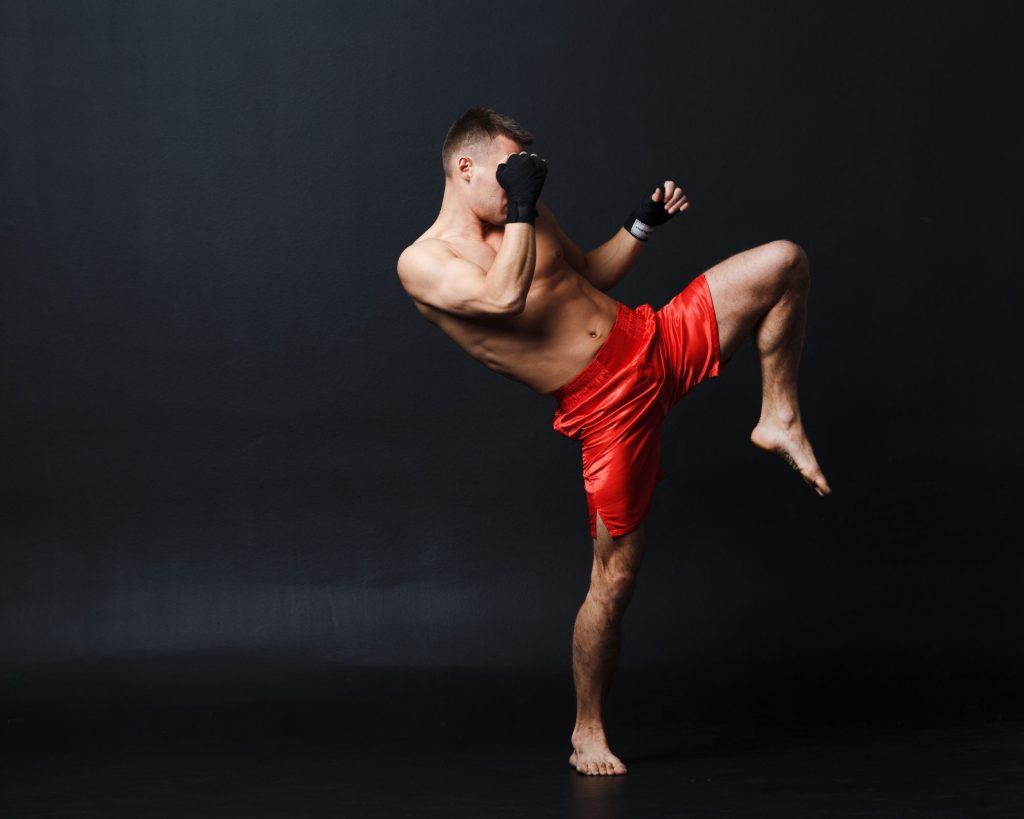
Just like with aiki jujutsu, there are lots of key elements that make up muay Thai, and they're all important for their own reasons. These key elements include the following:
- Stance, which will dictate how you move and attack.
- Footwork, which you need to dodge attacks and get into position to strike your opponent.
- The use of all eight limbs--from your arms to deliver punches, legs to launch kicks, elbows to bring down elbow strikes, and knees to use knee strikes.
- Clinching, a hallmark in muay Thai that's used to set up takedowns and strikes.
Another thing I think is important to look at is the different rankings and levels in each art.
If you are looking to take up either Aiki Jujutsu or Muay Thai, whether it's as a hobbyist or as a competitor, then you'll need to understand the different levels of proficiency in the sport, as well as what exactly is required for testing and ranking.
Aikido Rankings & Levels
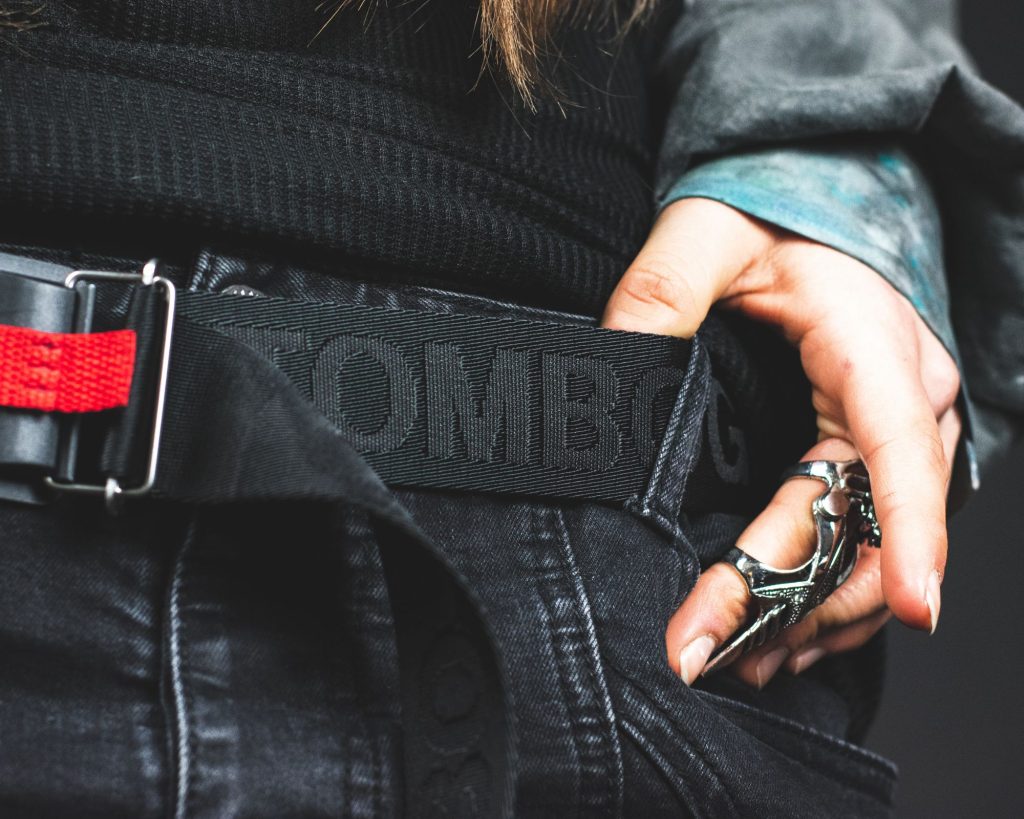
Aikido is a discipline that has many different levels, each represented by a different colored belt. The first level is white belt, which is for beginner students. Once you have mastered the basics of Aikido, you can move on to the blue belt, which is for intermediate students.
And finally, once you have mastered the art of Aikido, you can become a black belt, which is the highest level.
There are three degrees as a black belt holder: 1st dan, 2nd dan, and 3rd dan black belt. In order to achieve each of these degrees, you must pass a test that proves your mastery of Aikido.
There are also other ranks and colors that exist outside of the traditional ranking system. In some Western Aikido schools, there are more ranks added in between 1st dan and 2nd dan.
These ranks can be any combination of colors, and it allows for students to be promoted at a more gradual pace and helps to distinguish between students of different ranks.
Muay Thai Rankings & Levels
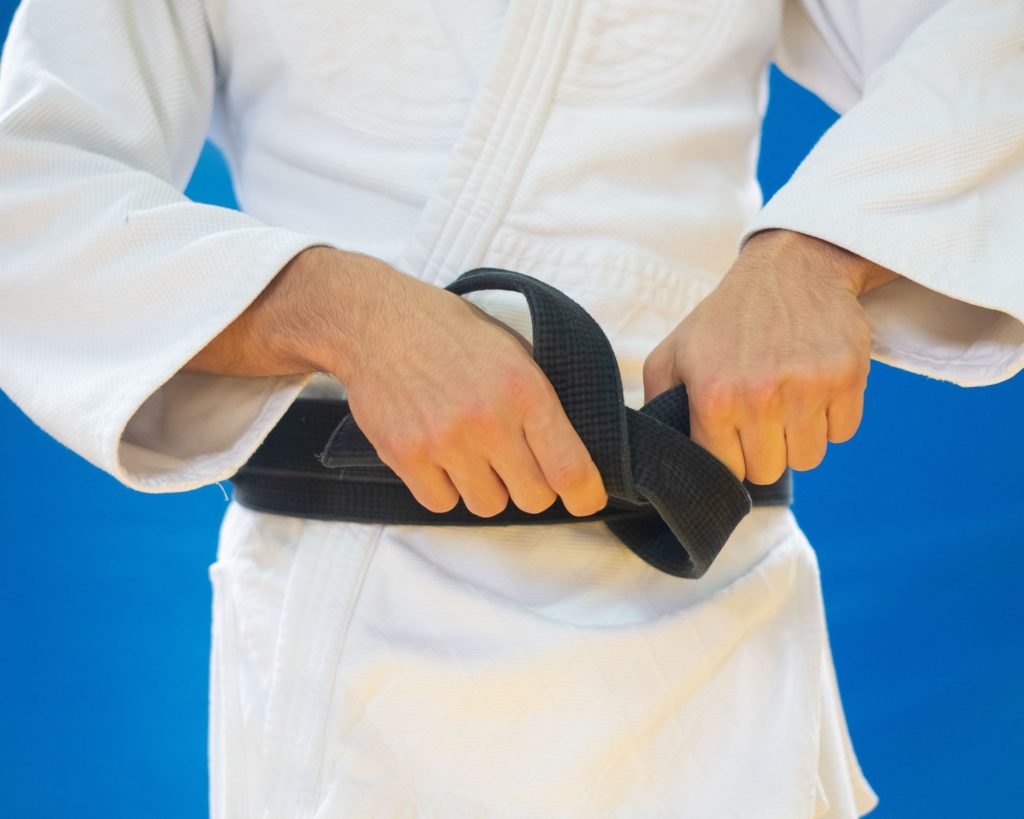
The title for this section is... probably a bit misleading, because there are no ranks in Muay Thai. It doesn't use a belt system to indicate a practitioner's rank or status.
Unlike in other martial arts disciplines like Karate, Muay Thai fighters don't wear belts or any other symbols of their level of experience or expertise.
This is in no small part due to the fact that traditional Muay Thai has its roots in professional fighting, where a fighter's skill and success in the ring are the only indicators of their ability.
The goal of many Muay Thai fighters is to compete and win championship belts, rather than to climb a rank ladder like in other martial arts disciplines. As such, practitioners focus on perfecting their training and honing their skills, so that they can rise to the top of the competition.
This means that in both traditional and modern Muay Thai gyms, sparring partners are often paired up randomly, rather than by belt colour or rank.
Ahh, but that doesn't mean that there isn't any structure or order in Muay Thai gyms. Specifically, fighters' skill levels, experience, and the quality of their victories are all taken into account when ranking them.
So while there isn't a definite belt system per se in Muay Thai, there are still ways to recognize and respect a fighter's skill and ability.
One last thing: if you already have experience training in martial arts, you may be familiar with the practice of pairing students of similar rank or experience level for sparring.
In Muay Thai, the same principle applies, but there is no formal way to keep track of who is a student and who isn't. Instead, fighters of all levels and backgrounds are welcome to spar with each other, allowing for a diverse, challenging, and trust me, interesting training experience.
Aikido Vs. Muay Thai Attire
This section simply compares the clothing and uniforms that practitioners wear in combat.
Aikido Attire:
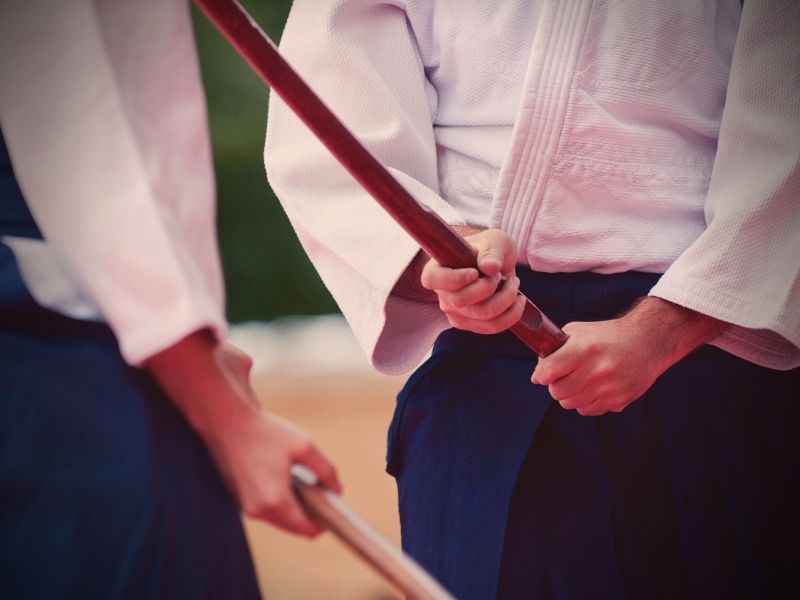
Most aikido practitioners wear a white dogi, or “uniform.” The dogi is a loose-fitting cotton kimono with a belt. In some schools, aikido students also wear hakama, which are pleated trousers that are tied at the waist and fall below the knee.
Male practitioners often don white tabi (socks), while female practitioners often wear white zori (wooden sandals). Some people also choose to practice without any clothes on in order to better feel their body and movements, but this isn't all too common.
Muay Thai Attire:
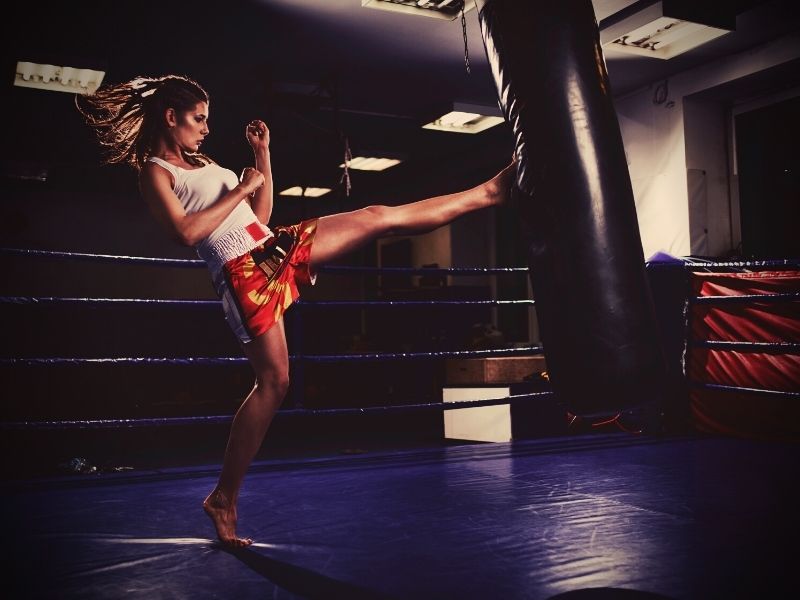
Most muay Thai practitioners wear shorts and a plain t-shirt, though some may choose to wear a robe called a "mung ten" when they are not fighting. The shorts and t-shirt are designed to be light and airy, so that they don't inadvertently restrict a fighter's movement.
Many fighters also choose to adorn themselves with traditional Thai jewelry, including brass rings, sacred cords, and even tattoos.
These items are believed to bestow good luck upon the wearer and help to protect them in battle. As such, they are considered a fairly valuable part of the Muay Thai experience.
What A Typical Aikido Training Session Looks Like
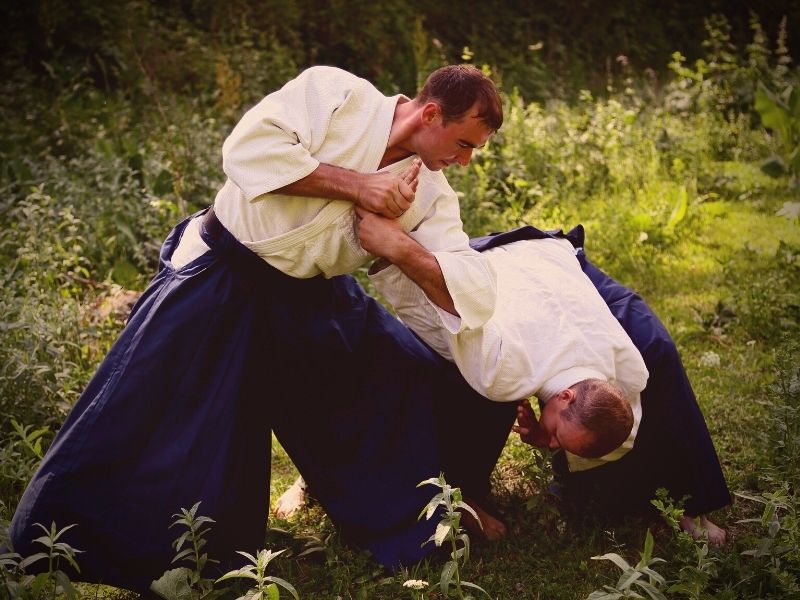
A typical Aikido practice session usually starts with a bow. This is a sign of respect for the dojo, the other students, and the instructor. The etiquette of aikido extends beyond just the bow, though. One must always be respectful, appreciative, and protective of all beings.
This attitude must be carried throughout the entire practice session.
Physical strain, whether during conditioning or in sparring against others, is part and parcel of Aikido. As such, practitioners need to maintain good manners and a positive attitude whenever they're in aikido class.
Aikido teaches you how to handle violence, but it still ultimately strives for peace, so never let your ego get in the way during your training.
Also remember that non-resistance is an essential element of proper aikido technique execution. Intercepting, deflecting, and redirecting an attack utilize the momentum and inertia of the attack.
Note that non-resistance does not mean being passively overpowered by the attack. But if you can avoid physical conflict, then you absolutely should.
It is also always important to maintain good posture and a relaxed body. Good posture includes maintaining your balance and keeping your center of gravity low. This helps you to be more aware of your surroundings and to respond more effectively to any situation.
Maintaining a relaxed body allows you to move more freely and makes it less likely that you will be thrown off balance by an attacker.
Similarly, be sure to focus on your breathing during aikido practice. This helps to calm and focus the mind, allowing for better decision making and execution of techniques.
Next, warm-up exercises are often done, including stretches and rolling or breakfalls (ukemi). These help to prepare the body for physical activity and prevent injury.
Following warm-ups, the instructor will lead the class through various aikido techniques and movements. These often involve practicing with a partner, called uke-nage (uke being the attacker, nage being the defender).
Practice with a spirit of cooperation, not necessarily competition. The goal is to mutually improve each other's technique and understanding of aikido principles, not to overpower or dominate the other person.
The practice session may also include weapons training, using a wooden sword (bokken) and wooden staff (jo). Weapons techniques often involve similar principles to those practiced with empty-handed techniques, but provide another layer of complexity and challenge.
What A Typical Muay Thai Training Session Looks Like
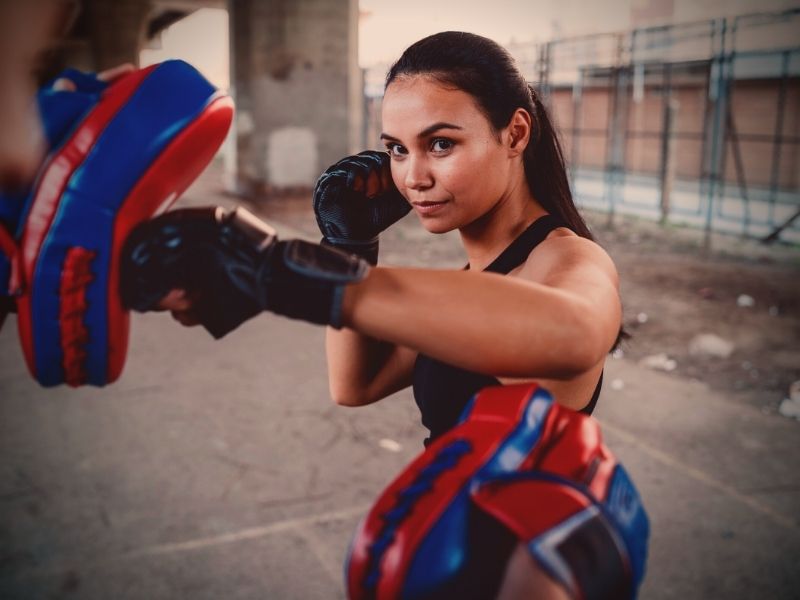
Warming Up
Most Muay Thai practice classes will start with a warm-up. This usually consists of light jogging, shadowboxing, and calisthenics. The purpose of the warm-up is to get your heart rate up and to loosen up your muscles.
Technique Training
After the warm-up, the majority of the class will be dedicated to technique training. This is where you will learn the various strikes, blocks, and sweeps that are used in Muay Thai. The instructor will usually demonstrate a technique and then have the students practice it.
Pad Work
Pad work is an important part of Muay Thai training as it allows you to put your techniques into practice against a resisting opponent. Pad work will usually be done in pairs, with one student holding pads while the other student throws strikes.
Sparring
Sparring is another important part of Muay Thai training as it allows you to apply your techniques in a live situation. Sparring is usually done with protective gear such as gloves, shin guards, and headgear. It is important to spar safely and not to use excessive force when sparring with a partner.
Cool Down
Most Muay Thai classes will end with a cool down. This usually consists of light jogging and stretching. The purpose of the cool down is to gradually lower your heart rate and to prevent muscle soreness.
If the last few sections have been a bit full-on or a bit too technical, you will like this next section! Why? Because who doesn't love a good martial arts flick?
Both Aikido and Muay Thai have been featured in a number of films and TV shows, so if you want to learn more about them, then entertain yourself with the following 👊
Aikido and Muay Thai Movies
These are some of the top movies and shows with Aikido in them:
- The Blind Swordsman: Zatoichi (2003)
- The Last Samurai (2003)
- Kill Bill: Vol. 1 (2003) and Kill Bill: Vol. 2 (2004)
- Street Fighter (1994)
- Ong-Bak: The Thai Warrior (2003)
- The Challenge (1982) TV series
Aikido can also be seen in popular shows such as:
- Daredevil (2015) TV series
- Arrow (2012) TV series
- Alias (2001-2006) TV series
- Chuck (2007-2012) TV series
- Xena: Warrior Princess (1995-2001) TV series
In Ong Bak, the main character must travel to Bangkok to recover a stolen Buddhist statue, using his Muay Thai skills to fight off villains along the way.
In The Protector, Tony Jaa plays a man on a mission to rescue kidnapped elephants, utilizing his Muay Thai abilities to battle against his enemies.
In Daredevil, a blind martial artist learns to use his heightened senses of hearing and touch to take down organized crime in the fictional neighborhood of Hell's Kitchen.
Next up, some movies that have Muay Thai in them that you may have heard of include:
- Ong Bak (2003)
- The Protector (2005)
- Kickboxer (1989)
- Only God Forgives (2013)
- Universal Soldier: Regeneration (2009)
In "Ong Bak," the main character must travel to Bangkok to recover a stolen Buddhist statue, using his Muay Thai skills to fight off villains along the way.
Kickboxer follows a man seeking revenge for his disabled brother, training in Muay Thai to defeat the man responsible.
Only God Forgives features Ryan Gosling as a drug smuggler in Bangkok who must face off against a ruthless policeman using his Muay Thai skills.
In Universal Soldier: Regeneration, Dolph Lundgren's character must use his Muay Thai training to defeat a group of terrorists and save hostages.
Conclusion: Aikido Vs. Muay Thai
I hope you now have a deeper understanding of Aikido and Muay Thai. In all truth, it is not about which discipline is "better" as they each have their pros and cons. If you do plan on starting classes for either, please check out my other related posts, as I have tried my best to answer all the FAQs related to the art.
Feel free to share this post and any graphics you like, and of course, if you have any questions or thoughts, drop them below or shoot me an email, and I will be happy to assist 🙂
Curious how long it'd take you to learn Aikido? Click here!
[author-box-jpx-fitness]
